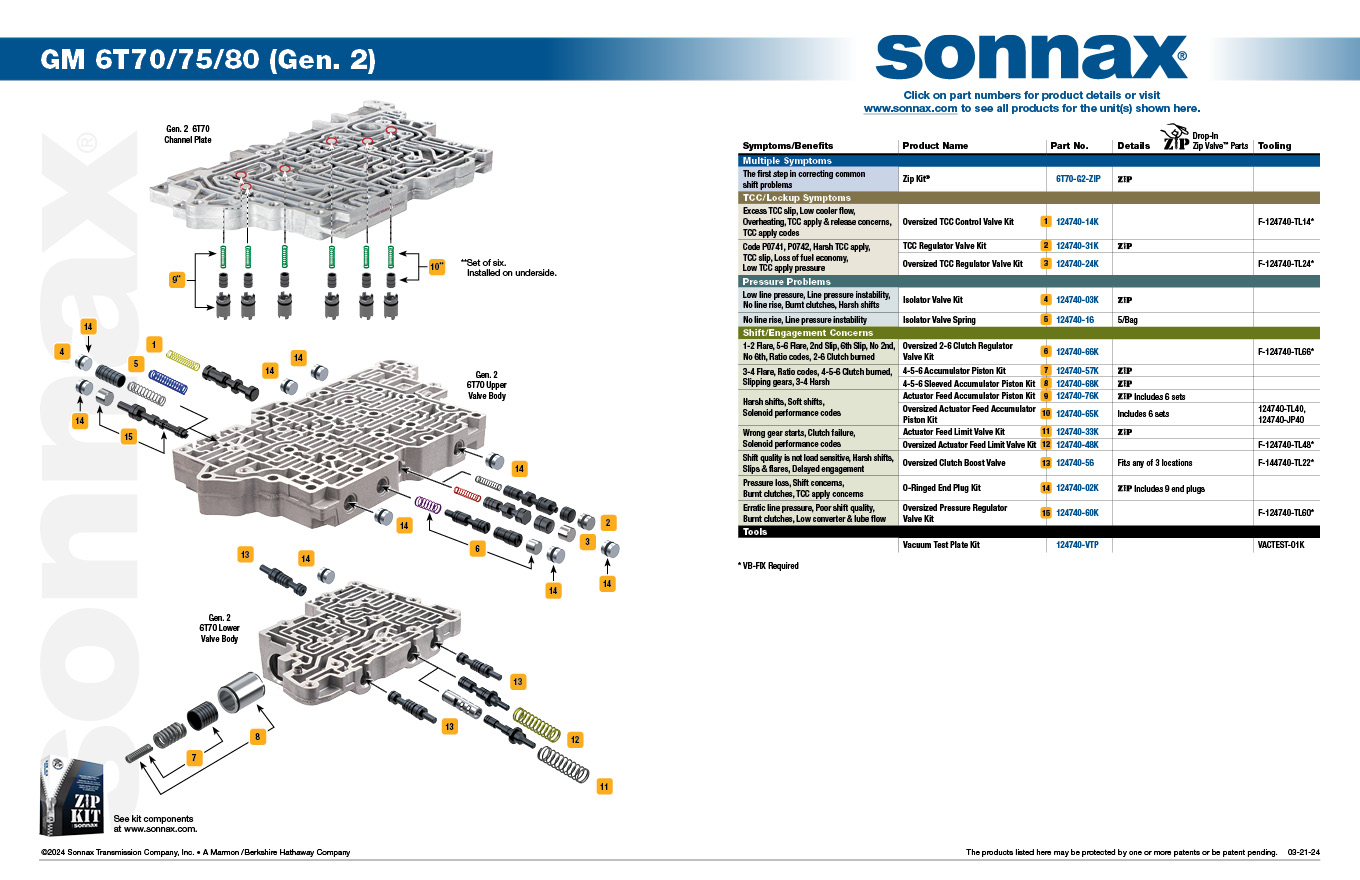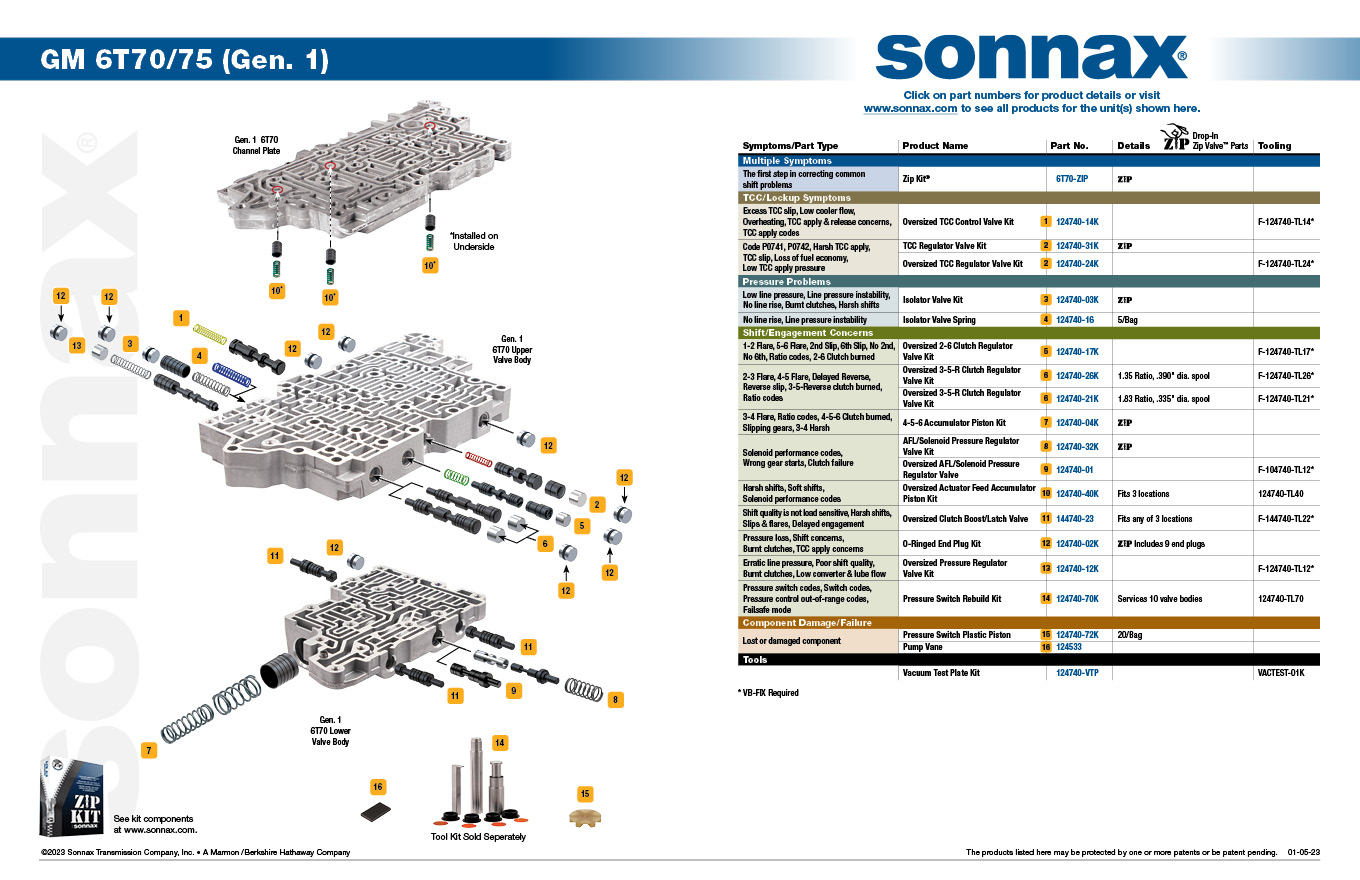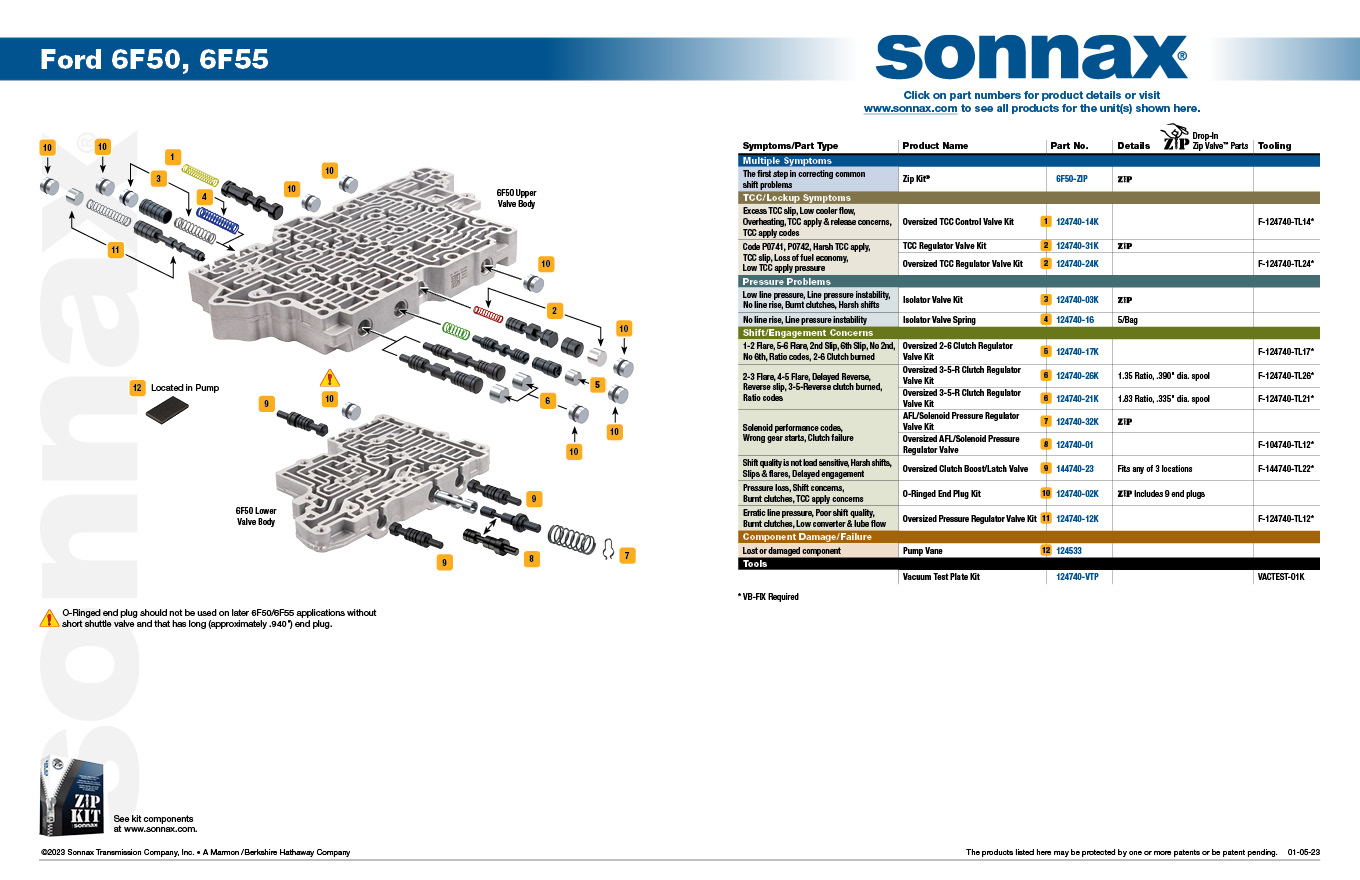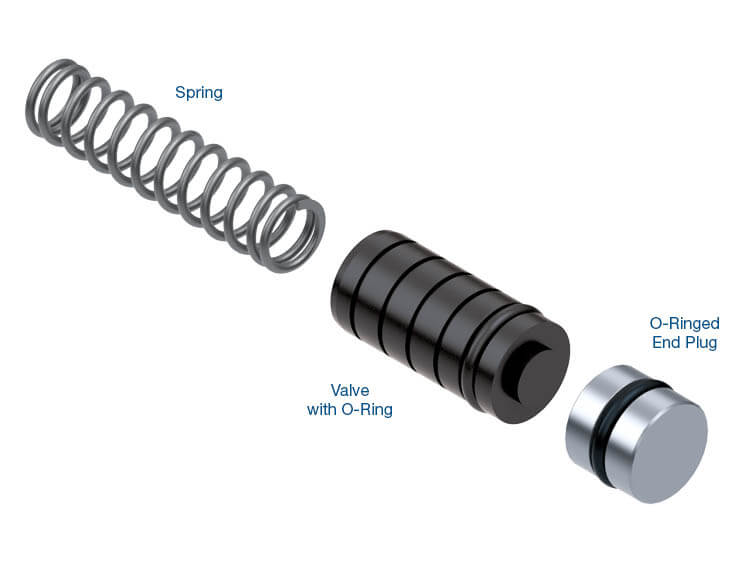November 06, 2014
Symptoms:
- No line rise
- Line pressure instability
Cause:
Isolator valve spring breaks, causing line pressure instability and/or allowing line pressure to exhaust.Correction:
Recover hydraulic control and renew line pressure performance by installing improved Sonnax isolator valve spring.6F50, 6F55, 6T70 (Gen. 1), 6T70 (Gen. 2), 6T75 (Gen. 1), 6T75 (Gen. 2), 6T80 (Gen. 2)
Isolator Valve Spring
Part No. 124740-16
Package Quantity: 5
View Instructions Find a DistributorListed transmissions may exhibit no line rise and/or line pressure instability due to a broken isolator valve spring. The isolator valve is in the main line pressure circuit and acts as a damper to smooth pulses from the pressure control solenoid. When this spring breaks, the end plug can shift toward the middle of the valve body, allowing unrestricted exhaust for main line pressure. Spring breakage can also cause isolator valve to jam in the bore, preventing the dampening effect that protects against line pressure instability. Installing Sonnax isolator valve spring 124740-16 restores normal line pressure operation. The spring is shot-peened to reduce spring fatigue and eliminate premature failure.
Sonnax valve body layouts provide a detailed overview of individual units making it quick and easy to determine what’s available for the specific valve body you’re working on. See all Sonnax valve body layouts.
GM 6T70, 6T75, 6T80 (Gen. 2) Valve Body Layout

GM 6T70/75 (Gen. 1) Valve Body Layout

Ford 6F50, 6F55 Valve Body Layout

December 02, 2014
GM Gen. 1 6T70, 6T75 Vacuum Test Guide
February 12, 2018
The Greatest Generation: How Small Changes Led to the New Form & Function of Gen. 2 6T70/75 Valve Bodies
August 09, 2018
GM Gen. 2 6T70, 6T75, 6T80 Vacuum Test Guide
September 21, 2018


